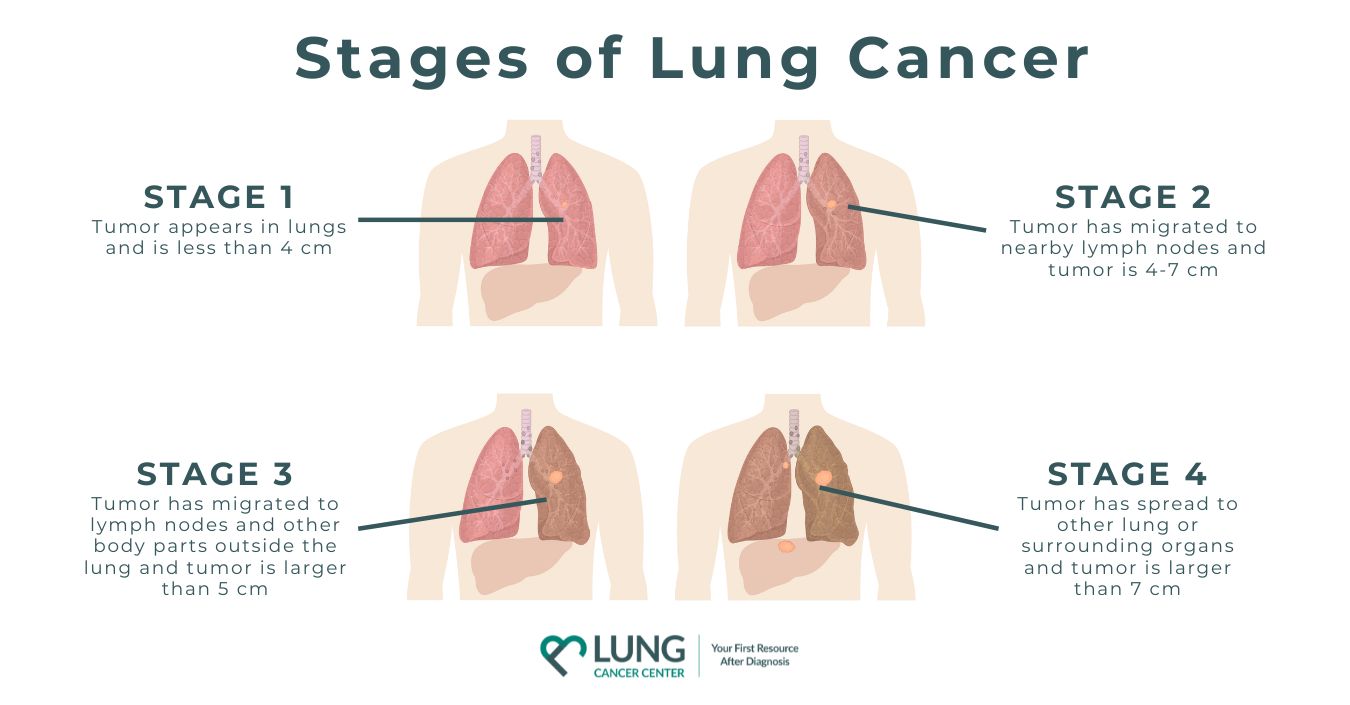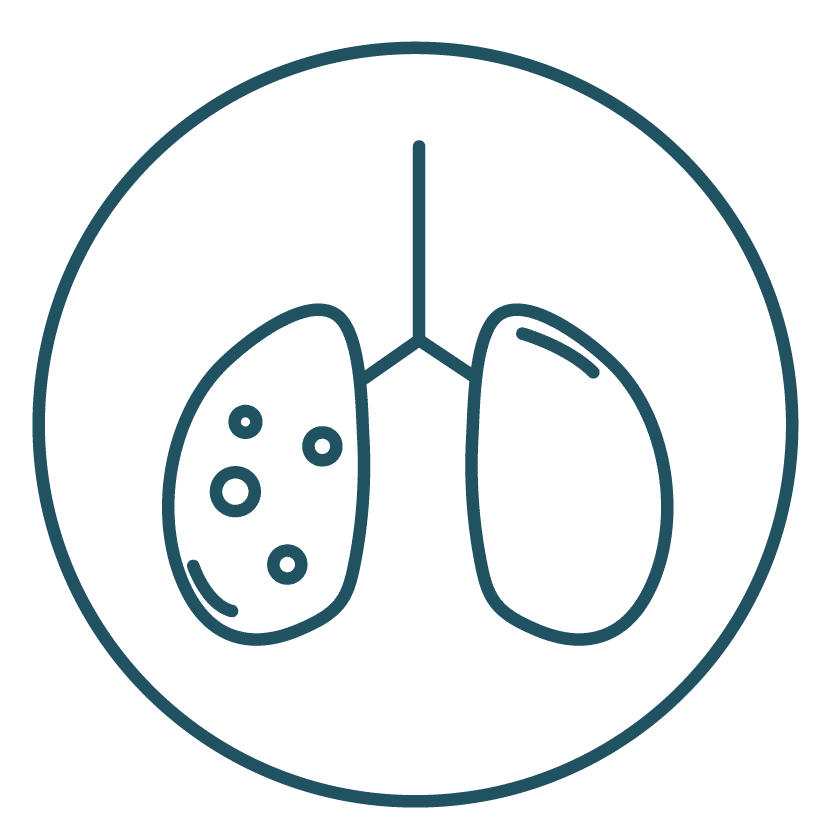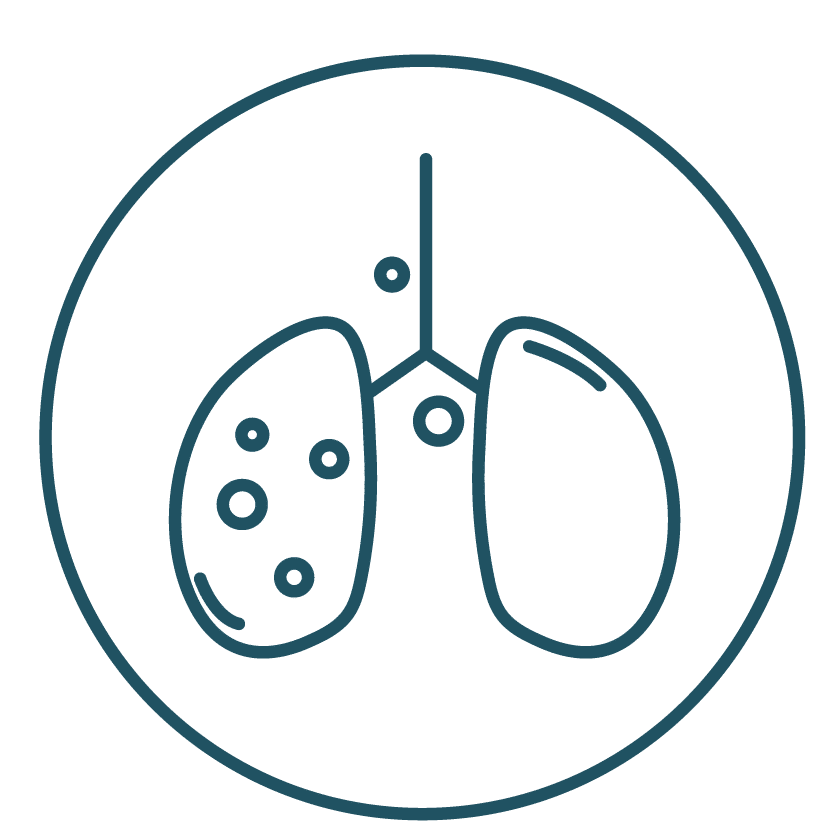Stages of Lung Cancer
Lung cancer is not a simple disease with one solution. The treatment and timeline can change based on a number of factors, such as the stage of cancer. Non-small cell and small cell lung cancer are divided into stages based on the size of tumors, spread to lymph nodes, and overall metastasis.


What Are the Stages of Lung Cancer?
Cancer staging systems detail the size and location of tumors, whether or not they have spread, and the extent to which they affect other organs. To determine the stages of lung cancer, a series of tests (usually a combination of x-rays and biopsies) are administered in an outpatient setting.
With a prognosis provided by staging, doctors can decide what kinds of treatment to prescribe to produce the best outcomes. However, your stage of cancer cannot tell you how long you’ll live; a prognosis is merely an assessment based on current medical technology and your individual health.
While each case is different, lung cancers are grouped into two categories: non-small cell lung cancer (NSCLC) and small cell lung cancer (SCLC). Metastatic lung cancers for NSCLC and SCLC are staged differently due to distinct growth locations and likely courses for each disease. Currently, only NSCLC has a formal staging system set by the American Joint Committee on Cancer (AJCC). SCLC, on the other hand, is a rarer diagnosis and stages tumors without an official system.
In both systems (formal and informal), curative treatments are more likely to be successful the earlier a cancer is diagnosed (such as in stage I). Early-stage lung cancers are generally confined to one of the lungs with a limited spread from the original tumor. Early-stage cancers have fewer symptoms and may go unnoticed for years.
Some of the first symptoms of both forms of lung cancer include:
- Chest pain while breathing
- Hoarseness
- Loss of appetite
- Persistent, worsening cough
- Shortness of breath
- Weakness and fatigue
- Wheezing
- Unexplained weight loss
Staging Non-Small Cell Lung Cancer
Non-small cell lung cancers account for about 80 to 85 percent of all lung cancers and, as such, are the only form formally measured in severity by oncologists. Primarily, NSCLC is broken down into four categories from stage I to stage IV. Preceding these are the earliest (and rarest) stages of NSCLC – categorized as either occult cancer (i.e., hidden cancer) or stage 0. They may be difficult to diagnose due to the scarcity of tumors. Subsequently, occult lung cancers and stage 0 diagnoses are not as frequent among patients getting tested for cancer today. Types of NSCLC include large cell carcinoma, adenocarcinoma, and squamous carcinoma.
From their doctor, patients receive a clinical stage based on the initial, non-invasive diagnostic testing results from physical exams and imaging scans. Most people are familiar with clinical stages from one to four, with the spread of cancer advancing alongside the stages of lung cancer.
Sometimes, patients may hear the pathological stage of their lung cancer using the TNM staging system. This system is more detailed, and results are only given after invasive types of testing (i.e., tissue biopsy and other surgical procedures). TNM staging is shown using the first letters of Tumor, Node, and Metastasis followed by X, 1, 2, 3, or 4 and letters depending on the amount of spread. As above, the number of tumors and the reach of the cancer increase with the numbers.

Stage I
Stage I (1) lung cancers have cancerous cells within the lung tissue but have yet to spread to nearby lymph nodes or other organs. Generally, stage I tumors are up to four centimeters across, have not spread far beyond the primary tumor or to other areas of the body and have not affected the lymph nodes nearest them.
In this stage, tumors may be referred to as “minimally invasive adenocarcinomas.” Nonetheless, cancerous cells are present in the tissue membrane that surrounds the lung and have started to penetrate the bronchus (i.e., the major breathing pathways branching off from the windpipe). However, tumors have not yet reached the area at which the windpipe breaks into the left and right bronchi (known as the carina). Yet, tumors may partly block an airway, making breathing painful or difficult.

Stage II
Broadly, stage II cancers consist of two or more separate tumors between four and seven centimeters in the same lung. These nodules have begun to spread to nearby lymph nodes and are affecting tissues in close proximity to the original tumor. Affected tissues may include the chest cavity and its inner lining, the phrenic nerve (controlling the diaphragm), and the lining of the membrane surrounding the heart. Some stage II cancers have spread to lymph nodes in the lung or near the carina but have not metastasized to distant areas of the body.

Stage III
Stage III (along with the subsequent stage) is considered advanced-stage lung cancer. Decades after occupational exposure to carcinogens, many people begin to experience symptoms of lung cancer at this third stage that force them to visit a doctor (such as a worsening cough or shortness of breath). Tumors are larger (at least three centimeters across), affect more lymph nodes, and have spread nearer to the center of the chest and windpipe.
In addition to spreading to nearby lymph nodes, tumors in stage III can be found in the main bronchus, the membrane around the lung, inside airways, or between the lungs (i.e., the mediastinum). In stage 3, tumors have not yet traveled to distant parts of the body, however.

Stage IV
Stage IV NSCLC is the most advanced stage and is frequently incurable. By stage IV, tumors have spread far beyond the original location to the opposite lung and to other organs around the body. As opposed to the previous stages of lung cancer, the size of tumors in stage IV does not play an important role in staging. Tumors may be of any size and may or may not have affected neighboring lymph nodes. They have, however, spread to other organs throughout the body (such as the brain, bones, or liver).
Symptoms of stage IV may be severe and require surgery to alleviate. For instance, large tumors in the chest can make breathing painful and will need to be removed or shrunk. Cancerous cells in the fluid around the lungs or heart – known, respectively, as malignant pleural effusion and malignant pericardial effusion – may also necessitate surgery. These are known as palliative treatments and are intended to extend the patient’s quality years of life.
Staging Small Cell Lung Cancer
As the rarer form of lung cancer, small cell lung cancer does not have an official staging system. Nonetheless, doctors may still use the TNM system to describe the size and action of metastatic tumors. In most cases, an SCLC diagnosis will be categorized as a limited-stage or extensive-stage lung cancer. Subtypes of small cell lung cancer include oat cell carcinoma because of their small size and resemblance to oats under a microscope.
Limited-stage tumors are generally confined to a single lung and may involve some of the lymph nodes nearby. At this point, cancer has not spread beyond the chest or to other areas of the body.
Extensive-stage SCLC, on the other hand, has metastasized beyond the original tumor and may have reached the pleural fluid, bone marrow, or the brain. About 66 percent of patients with SCLC have already reached this stage by the time of diagnosis. This form of cancer can be especially hard to treat due to the size and number of cancerous cells located throughout the body.
What Does My Lung Cancer Stage Mean?
More than just a number, the stage of your cancer and prognosis determine what types of treatments are required to either cure or palliate symptoms. Typically, SCLC tumors grow more quickly than NSCLC, prompting an expedited combination of treatments. Although SCLC spreads more quickly than NSCLC, it is usually more responsive to chemotherapy.
Below are the most common treatments for each stage of NSCLC.
| Stage I | Surgery (sleeve resection, segmentectomy or wedge resection, lobectomy), chemotherapy, radiation, radiofrequency ablation (RFA) |
| Stage II | Surgery (lobectomy, sleeve resection, pneumonectomy), radiation |
| Stage III | Chemotherapy with radiation, radiation, immunotherapy |
| Stage IV | Chemotherapy with radiation, immunotherapy, targeted therapy, photodynamic therapy, lung stent |
If you have recurrent lung cancer (i.e., tumors return after treatment), your doctor will conduct another round of tests and make another diagnosis of the stage.


